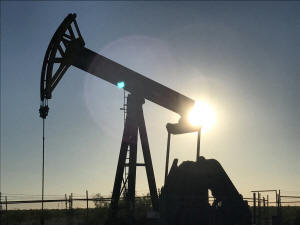Aerial surveys detect dozens of methane 'super-emitters' in Permian
 Send a link to a friend
Send a link to a friend
 [January 24, 2022]
By Valerie Volcovici and Nichola Groom [January 24, 2022]
By Valerie Volcovici and Nichola Groom
WASHINGTON (Reuters) - Around 30 oil and
gas facilities across the Permian Basin in Texas and New Mexico spewed
large amounts of methane for three years, emitting the equivalent
climate pollution from half a million cars, according to a report
released on Monday.
The facilities, which include well pads, pipelines, compressor stations
and processing facilities, were observed as "persistently" emitting
large volumes of methane over the three years of aerial surveys done by
the Environmental Defense Fund and research group Carbon Mapper.
These so-called "superemitters," located in the most productive U.S. oil
field, only account for .001% of the Permian Basin's oil and gas
infrastructure but emit around 100,000 tonnes of methane per year.
This means that repairing those leaks offers companies an immediate
opportunity to help achieve U.S. and international methane reduction
targets and save around $26 million in escaped natural gas, the report
said.
"The magnitude of emissions coming from a handful of methane sources in
one of the top oil and gas producing regions illustrates the opportunity
to make significant near-term progress toward the stated methane
reduction goals of the US, other countries and companies around the
world," said Riley Duren, CEO of Carbon Mapper and a researcher at
University of Arizona.
The report shows these large emission sources cut across a diverse range
of infrastructure and oil and gas operators in the Permian Basin.

[to top of second column]
|

An oil pump is seen operating in the Permian Basin near Midland,
Texas, U.S. on May 3, 2017. Picture taken May 3, 2017.
REUTERS/Ernest Scheyder//File Photo
 Methane is the second-biggest cause
of climate change after carbon dioxide. Its high heat-trapping
potential and relatively short lifespan in the atmosphere means
cutting its emissions can have an outsized impact on the trajectory
of the world's climate.
The U.S. Environmental Protection Agency last year proposed the
first federal regulation targeting methane emissions from existing
oil and gas facilities. It is taking public comment until the end of
January and will introduce a supplemental proposal this spring
outlining measures for routine flaring and smaller-sized wells.
The United States also signed on to a voluntary global methane
pledge with around 100 countries, agreeing to slash methane by 30%
below 2020 levels in eight years.
New Mexico, home to part of the Permian Basin, is finalizing its own
rules in March that require companies to regularly monitor
processing and production facilities.
(Reporting by Valerie Volcovici; Editing by Aurora Ellis)
[© 2022 Thomson Reuters. All rights
reserved.]
This material may not be published,
broadcast, rewritten or redistributed.
Thompson Reuters is solely responsible for this content. |